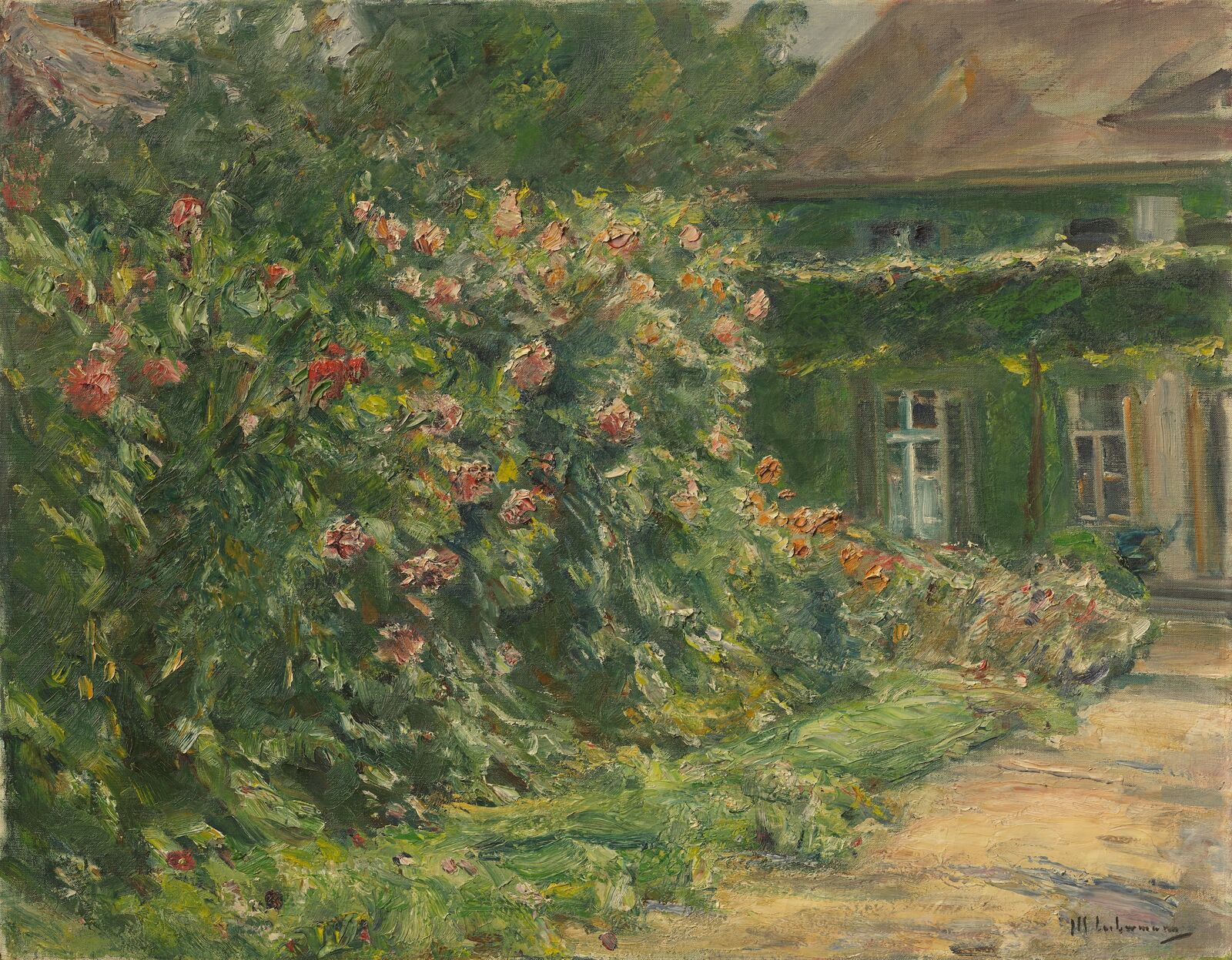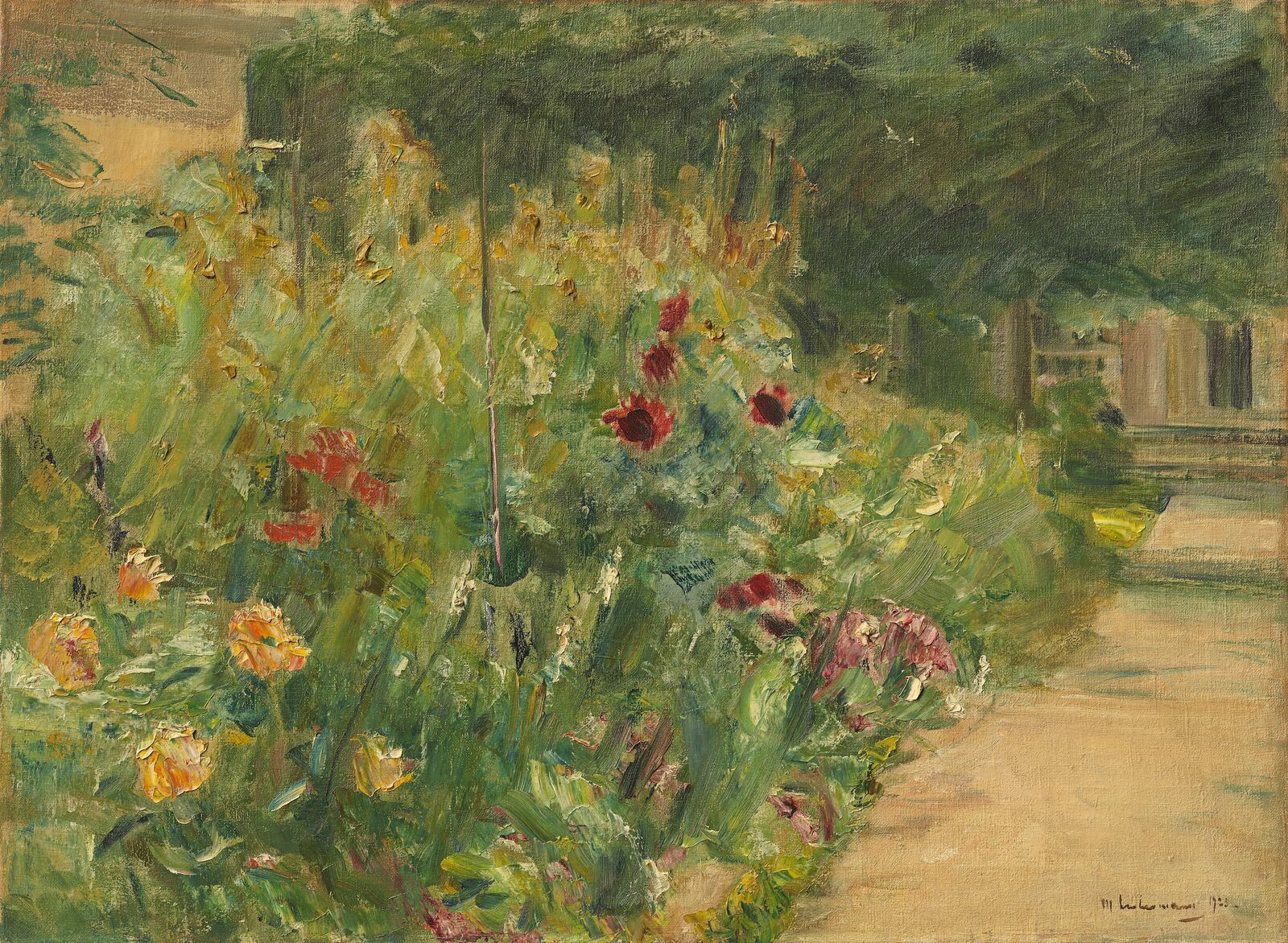
Avantgarde: Max Liebermann and Impressionism in Germany
With his Impressionist painting, Max Liebermann initiated the first avant-garde movement in Germany. As a collector and promoter of French Impressionism and as president of the Berlin Secession, he introduced an international perspective to the nationalistic art world of the German Kaiserreich. The exhibition explores a variety of themes and styles from the years between 1870 and 1930. Along with painters firmly anchored in the canon such as Lovis Corinth, Max Liebermann, and Max Slevogt, the show also presents lesser-known artists like Maria Slavona and Lesser Ury.

Max Liebermann: Blumenstauden am Gärtnerhäuschen nach Osten, 1923, Private Collection
The point of departure for this major special exhibition on German Impressionist painting is a private collection whose holdings include not only nine paintings by Max Liebermann, but also important works by Max Slevogt and Lesser Ury. These foundational pieces are augmented by more than 100 loans from some fifty international museums and private collections. The exhibition spans a chronological arc from the 1870s to the 1930s, presenting a range of artistic positions that highlight the variety and diversity of German Impressionism.
In addition to key works by artists long firmly anchored in the canon such as Lovis Corinth, Max Liebermann, Max Slevogt, and Fritz von Uhde, the show also features works by lesser known artists, including Philipp Franck, Theodor Hagen, Friedrich Kallmorgen, Gotthardt Kuehl, Christian Landenberger, Heinrich Eduard Linde-Walther, Ernst Oppler, Franz Skarbina, Lesser Ury, Max Uth, and Heinrich von Zügel. The exhibition also sheds light on the still-neglected contribution of woman artists such as Charlotte Berend-Corinth, Dora Hitz, Sabine Lepsius, and Maria Slavona to the development of German Impressionism. Lenders include the Alte Nationalgalerie in Berlin, the Galerie Neue Meister in Dresden, the Folkwang Museum in Essen, the Städel Museum in Frankfurt am Main, the Hamburger Kunsthalle, the Neue Pinakothek in Munich, the Musée d’Orsay in Paris, and the Belvedere in Vienna.
Presented in cooperation with the Museum Frieder Burda, Baden-Baden, where the show will be on view October 3, 2025 – February 8, 2026